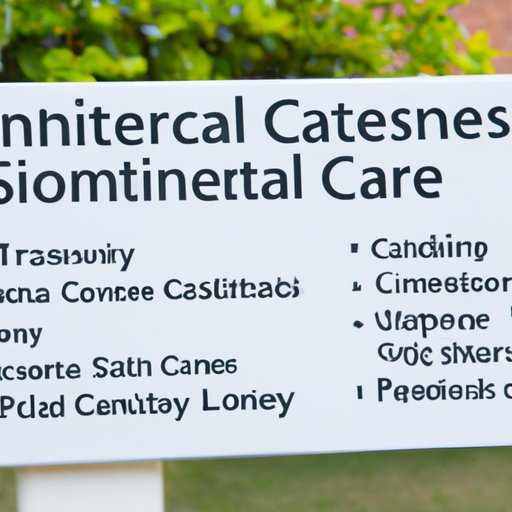Introduction
Care homes are residential facilities that provide housing, care, and support for elderly or disabled individuals. Care homes have become increasingly popular as an attractive investment opportunity, due to their potential for steady income streams and capital gains. This article will explore the potential financial benefits, pros and cons, tax advantages, and risks associated with investing in a care home.

Analyzing the Financial Benefits of Investing in a Care Home
One of the primary reasons why investors choose to invest in care homes is the potential for steady income streams. Care homes generate revenue through fees paid by residents and/or their families, as well as government subsidies. The amount of income generated depends on the size and occupancy rate of the care home, as well as the types of services provided. The expected return on investment (ROI) from care homes varies widely, depending on the specific care home and market conditions.
In addition to providing steady income streams, care homes may also appreciate in value over time. This means that investors may be able to reap significant capital gains when they sell their care homes. As with any real estate investment, the potential for appreciation depends on local market conditions.
Exploring the Pros and Cons of Care Home Investment
Investing in a care home can offer numerous advantages. One of the primary benefits is the potential for steady income streams. Care homes typically have low vacancy rates, making them more reliable investments than other types of rental properties. Additionally, care homes may appreciate in value over time, resulting in potential capital gains for investors.
However, there are also some drawbacks to investing in a care home. The start-up costs can be high, as these properties require significant renovations and upgrades before they can be used as care homes. Additionally, there are ongoing expenses associated with running a care home, such as staff salaries, utilities, and insurance. Finally, there are often significant regulatory issues to consider when investing in a care home.

Examining the Potential Tax Advantages of Investing in a Care Home
Investors may be able to take advantage of certain tax benefits when investing in a care home. It is important to understand the applicable tax laws in your area, as these vary from state to state. Generally, investors may be able to deduct the cost of repairs and improvements, as well as depreciation of the property. Additionally, there may be tax credits available for energy efficiency upgrades and other investments.
How to Find the Right Care Home for Investment
When looking for a care home to invest in, it is important to research local market conditions and evaluate potential properties. Investors should look for care homes in desirable locations with reasonable occupancy rates. Additionally, investors should consider the size and condition of the property, as well as the amenities offered. Finally, investors should negotiate the purchase of the care home to ensure they get the best deal possible.
Comparing the Return on Investment from Care Homes to Other Types of Real Estate Investments
Investors may find that investing in a care home offers greater returns than other types of real estate investments. Care homes tend to have lower vacancy rates and may appreciate faster than other types of rental properties. Additionally, investors may be able to take advantage of certain tax benefits when investing in a care home. It is important to compare the expected returns on investment from different types of real estate investments before making a decision.

Investigating the Risks Associated with Investing in a Care Home
It is important to understand the legal obligations of owning a care home before investing in one. Owners of care homes must comply with all applicable regulations and may be held liable for any negligence or misconduct that occurs at the facility. Additionally, investors should consider the potential liabilities associated with operating a care home, such as medical malpractice claims. Finally, investors should make sure they have adequate insurance coverage to protect themselves against any potential risks.
Conclusion
Care home investments can offer numerous potential benefits, including steady income streams, low vacancy rates, potential for appreciation, and tax advantages. However, there are also risks associated with investing in a care home, including high start-up costs, ongoing expenses, and regulatory issues. Before investing in a care home, investors should research local market conditions, evaluate potential properties, and negotiate the purchase of the care home. Additionally, investors should compare the expected return on investment from care homes to other types of real estate investments. Finally, investors should understand the legal obligations of owning a care home and manage risks through insurance coverage.
(Note: Is this article not meeting your expectations? Do you have knowledge or insights to share? Unlock new opportunities and expand your reach by joining our authors team. Click Registration to join us and share your expertise with our readers.)
